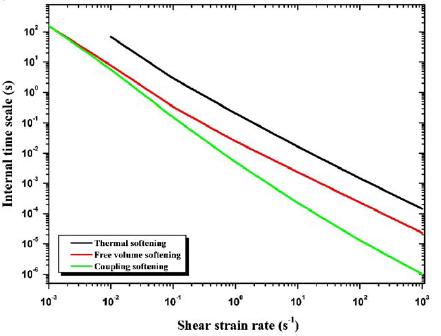To uncover the physical origin of shear-banding instability in metallic glass (MG), a theoretical description of thermo-mechanical deformation of MG undergoing one-dimensional simple shearing is presented. The coupled thermo-mechanical model takes into account the momentum balance, the energy balance and the dynamics of free volume. The interplay between free-volume production and temperature increase being two potential causes for shear-banding instability is examined on the basis of the homogeneous solution. It is found that the free-volume production facilitates the sudden increase in the temperature before instability and vice versa. A rigorous linear perturbation analysis is used to examine the inhomogeneous deformation, during which the onset criteria and the internal length and time scales for three types of instabilities, namely free-volume softening, thermal softening and coupling softening, are clearly revealed. The shear-banding instability originating from sole free-volume softening takes place easier and faster than that due to sole thermal softening, and dominates in the coupling softening. Furthermore, the coupled thermo-mechanical shear-band analysis does show that an initial slight distribution of local free Volume can incur significant strain localization, producing a shear band. During such a localization process, the local free-volume creation occurs indeed prior to the increase in local temperature, indicating that the former is the Cause of shear localization, whereas the latter is its consequence. Finally, extension of the above model to include the shear-induced dilatation shows that such dilatation facilitates the shear instability ill metallic glasses.

This paper was published as:
Jiang MQ, Dai LH. On the origin of shear banding instability in metallic glasses. Journal of the Mechanics and Physics of Solids,57(8):1267-1292(2009)